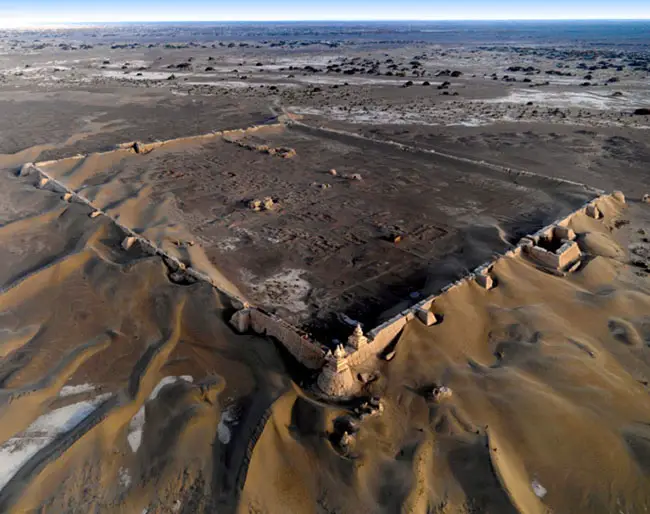Khara Khoto: Unveiling the Secrets of the Black City

Hidden amidst the shifting sands of western Inner Mongolia, China, lie the enigmatic ruins of Khara Khoto, often referred to as the “Black City.” Once a thriving center of trade and culture along the Silk Road, this ancient city’s story is one of mystery, decline, and rediscovery. Founded in 1032, Khara Khoto was a pivotal trading hub, but its fate took a dramatic turn by the late 14th century. The city’s haunting silence and eventual burial under sand make it a captivating subject for historians and explorers alike.
The Rise and Fall of Khara Khoto
1. A Hub of the Silk Road
Khara Khoto, established in 1032, was a crucial stop on the Silk Road, facilitating trade between China and the West. This bustling city was strategically positioned to take advantage of the lucrative trade routes that connected diverse cultures and goods. During its peak, Khara Khoto was a vibrant center of commerce, culture, and religion, with a thriving marketplace and a rich blend of artistic and architectural achievements.
2. The Mysterious Decline
By the late 14th century, Khara Khoto experienced a dramatic decline. The reasons behind its sudden silence remain a topic of speculation. Some theories suggest that warfare or a diverted water source led to the city’s abandonment. Once a prosperous hub, Khara Khoto was eventually buried under the encroaching sands of the Gobi Desert, becoming a ghostly relic of a bygone era.
Rediscovery and Significance
1. The 20th Century Rediscovery
In the early 20th century, Khara Khoto was rediscovered by Russian explorer Pyotr Kuzmich Kozlov. His expedition unearthed a treasure trove of artifacts buried beneath the sand for centuries. Among the finds were religious texts, intricate artwork, and everyday items that provided invaluable insights into the daily lives of the city’s inhabitants. The rediscovery of Khara Khoto sparked renewed interest in the Silk Road’s history and the complexities of medieval trade networks.

2. A Glimpse into Ancient Life
The artifacts recovered from Khara Khoto offer a unique glimpse into the lives of those who once inhabited this desert city. The religious texts and artwork reveal the city’s cultural and spiritual life, while everyday items provide insights into the practical aspects of daily existence. These findings help historians piece together the story of Khara Khoto and understand its role in the broader context of Silk Road trade and cultural exchange.
Visiting Khara Khoto
1. An Archaeological Gem
Today, Khara Khoto stands as a testament to the rich history of the Silk Road. While the ruins are not a typical tourist destination, they offer a fascinating glimpse into a world long buried by sand. For those interested in archaeology and history, visiting Khara Khoto can be a rewarding experience, providing an opportunity to explore the remnants of a city that once played a pivotal role in ancient trade.
2. Preservation and Research
Efforts to preserve and study Khara Khoto continue, as researchers and archaeologists work to uncover and protect its remaining treasures. The site remains an important part of the study of Silk Road history, contributing valuable knowledge to our understanding of medieval trade routes and cultural exchanges.
Conclusion
Khara Khoto, the Black City, remains one of the most intriguing and mysterious sites of ancient history. From its bustling days as a Silk Road trading hub to its rediscovery in the 20th century, the city’s story is a testament to the complexities and wonders of the past. Whether through its haunting ruins or the fascinating artifacts uncovered, Khara Khoto continues to captivate the imagination and provide valuable insights into a long-lost era.
Have you ever explored ancient ruins or learned about the Silk Road? Share your experiences and thoughts in the comments below!






